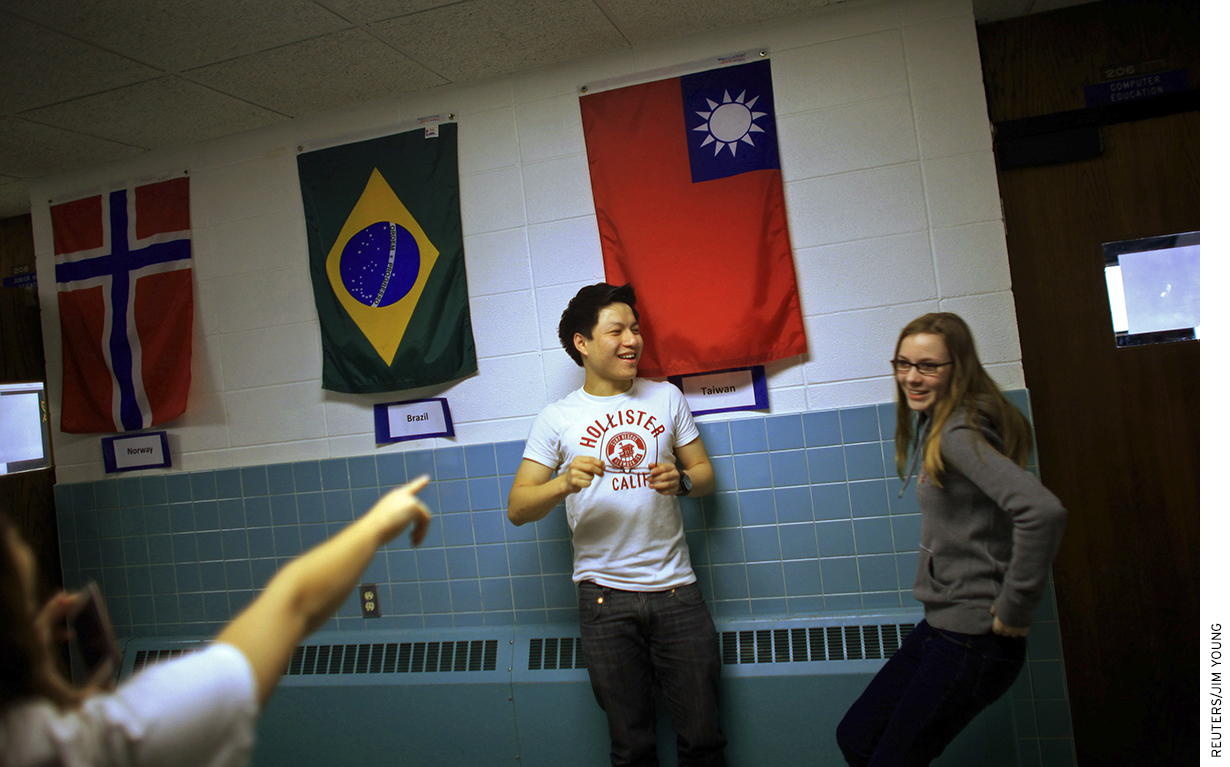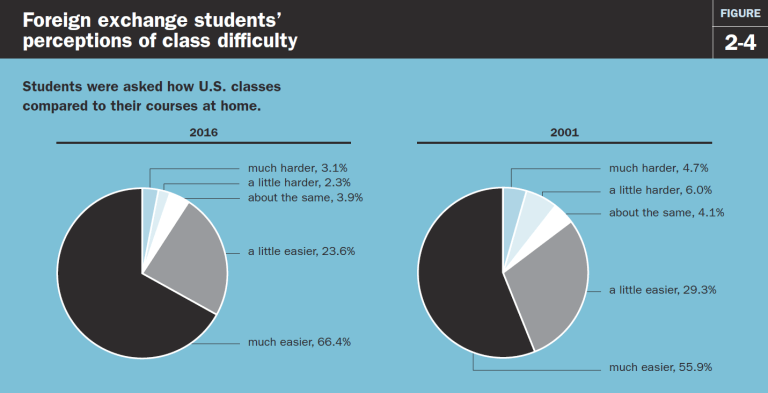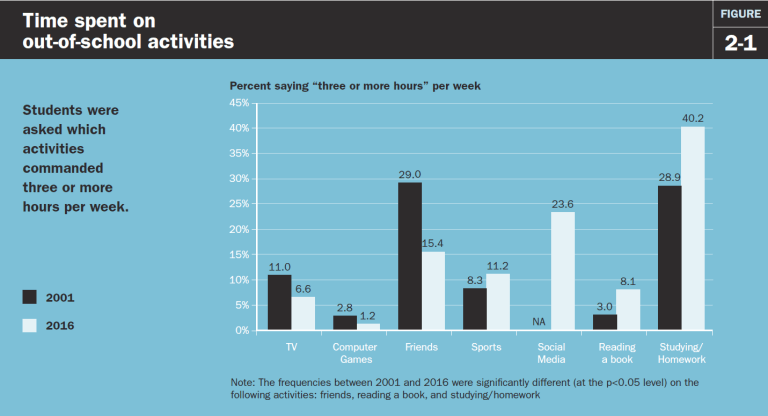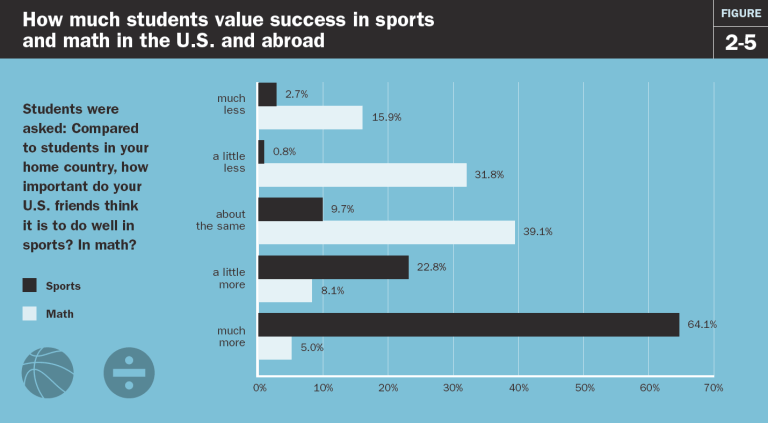
In 2001, the Brown Center conducted a first-of-its-kind survey of foreign exchange students, asking kids from abroad who have attended U.S. high schools what they think about U.S. education and their American peers. It quickly became one of the most popular studies in the center’s history. In the 2017 Brown Center Report on American Education, author Tom Loveless replicated the survey, hoping to shed light on what is peculiarly American about American high schools. With these new data, Loveless compares the results, more than a decade apart, with a surprising result: Not much has changed.
To recreate the survey, the same set of questions asked in 2001 (with a few modifications) was asked once again in the spring of 2016. A random sample of 600 foreign exchange students was drawn from a list of all international students attending U.S. high schools under the AFS International program. The survey was conducted by mail; responses were received from 259 students (28 surveys were returned as undeliverable) for a response rate of 45.3 percent. It’s important to note that the analysis of this data focuses only on this sample, and should not be seen as representative of all international students. Indeed, it’s this group’s uniqueness, not its typicality, that makes the students’ views so interesting.
International students still think U.S. schools are much less challenging than schools in their home countries. When asked in 2001 to rate the relative difficulty of U.S. classes, 55.9 percent replied “a lot easier”; compare this to the 2016 recent results, where 66.4 percent of respondents rated classes in America as “much easier” than in their home country, a statistically significant difference. Only about 5 percent of those surveyed indicated that they thought U.S. classes were harder, even lower than the result in 2001. And similar trends exist in the perception of time spent on schoolwork: International students surveyed think Americans devote less time to schoolwork. In 2001, 34 percent said much less, a figure that grew to 44 percent in 2016. When the 20.5 percent who answered “a little less” are also considered, it means that nearly two-thirds of foreign exchange students, 64.5 percent, believe U.S. high school students spend less time on schoolwork than their peers do back home.
Asked about how they spend time in their home country when not in school, the international respondents indicated that homework was the dominant activity by far. In 2016, more than 40 percent said they spent three or more hours on it per week, up from about 29 percent in 2001. Another development is the rise of social media. That activity, which was not included on the 2001 survey, also gets a lot of time, with 23.6 percent of respondents naming it as a popular activity. Note that the percentage of students saying they spend three or more hours with friends dropped sharply from 2001 to 2016, 29 percent to 15.4 percent. A significant portion of teens’ social lives is now online.
One of the most intriguing findings from the 2001 surveys involved the importance peers attribute to success at math and sports. Students from abroad reported that American teens were much more likely to value success at sports than at math. The questions were asked again in 2016 and, again, generated similar results. Nearly two-thirds of foreign exchange students surveyed, 64.1 percent, view American teens as valuing success at sports “much more” than teens in their home countries. Conversely, only 5 percent of foreign students said U.S. pupils place a much greater importance on success at math than their peers at home. The importance of athletic success in allocating status appears just as alive and powerful today in U.S. high schools as it was in the past.
In the end, the 2016 survey of foreign exchange students revealed many of the same findings that emerged from the 2001 survey. Loveless concludes: “The past two decades of education reform in the U.S. have focused on ratcheting up expectations through standards and testing and holding schools accountable for academic progress. Whatever their impact on learning, these efforts appear not to have dramatically altered the impression that U.S. schools, when compared to those of other countries, do not fully embrace inculcating knowledge as the high school’s primary institutional mission.”
Read more about the students’ responses—including topics related to employment and learning a second language—inside the 2017 Brown Center Report on American Education.
— Louis Serino
Louis Serino is the Managing Editor of the Brookings Institution’s Brown Center Chalkboard.
This post originally appeared on the Brown Center Chalkboard.





